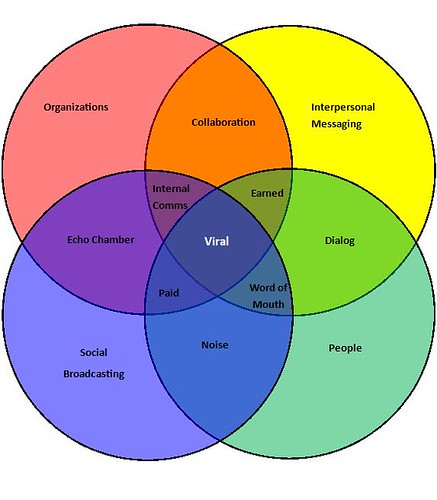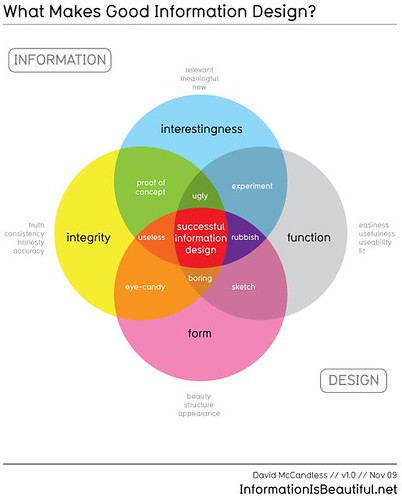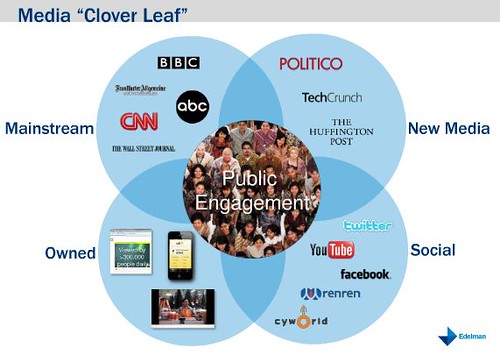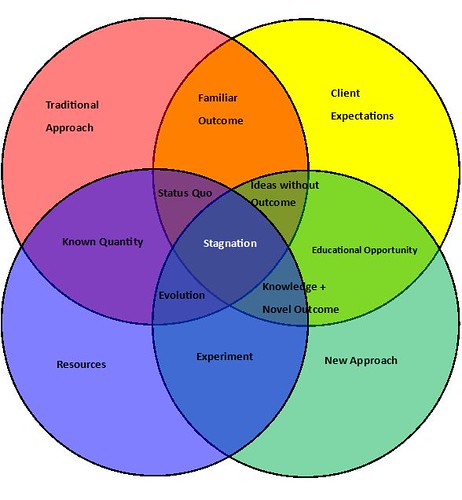Clovering: – verb. 1. Daily (minute) layering of potential options with social groups into adaptable data (thoughts) that mitigate complex decisions into simpler ones. 2. Activity of illustrating layers of influence into a graphic (clover leaf) to both discern and organize complex thoughts into simpler data. 3. A game played through charting a clover leaf diagram where the players submit ideas (either forces or goals) with the hopes to fully populate the clover.
In nearly every second of our day, we’re layering and integrating piles of data and information to make sense of our world. Tech and media companies barrage us with a host of tools and services to filter, aggregate and process the incessant information. We carry around toolkits including hardware (phones) and software (apps) — our tiny robots, our little helpers, extensions of ourselves — that help mitigate the river of data that is rampant within our western-culture lives.
We live within these layers. We float through them, they wave over us. If you were to illustrate our era, it would look like a shifting pile of translucent pancakes. You’re looking through a shifting screen of layers, viewing the incrementally cranking inside mechanisms of a clock; it would look like a massively layered Venn diagram.
It is no coincidence that Venn diagrams have become very popular. I see new diagrams every day, including a non-Venn (and a personal favorite), the “clover” diagram. As a culture we’ve been producing these layered illustrations to try to figure it all out. In a way, they are telling us the story of how the era is progressing. Back in ’09, HuffPo provided a slideshow, Jesus, Karaoke, And Serial Killers: The Funniest Venn Diagrams The Web Has To Offer.
This interest-spike in ’09 of Venn Diagrams denotes a cultural shift — one that suggests acquiescence to the data and a method to find joy within a seemingly unmanageable data-pile.
At WE Studio D, we were playing with a clover diagram to discern and divide up communications in order to find “viral.” This is more of an organic puzzle than a locked-in solution:

It’s satisfying to be able to lodge certain criteria into a position, to feel the sense of order, even if it’s fleeting. I am an open proponent of “clovering” and believe it could be a great tool for brainstorming and filtering down to the root elements of any complex scenario.
Ever since I’ve shared my interest in these clovers with friends and coworkers, I keep finding more and more. I received this clover from a friend who knows I dig diagrams. This one is also from ’09 and tries to define “what is a good information design:”

Edelman Digital also uses a clover to help define media:

In all three clovers, the middle spot seems to be the “answer” to whatever problem we’re trying to solve.
Recently I’ve begun to practice clovering as part of my creative routine. I’ve introduced it to friends at dinner (where we used it to determine the joy of coffee) and in the office with my co-worker Matt (to investigate the balancing act of client relationships). In Matt’s clover, the answers wasn’t in the middle, it was actually one of the side layers …Evolution!

Give it a try, see what you come up with, and let me know if you want to share it here on this blog.
Thanks!